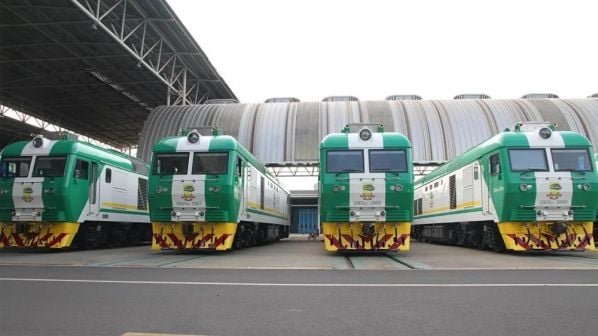By Michael Popoola Ajayi
The discussion surrounding the implementation of Standard Gauge Railway (SGR) in Nigeria has sparked significant debate and scrutiny in recent times. As the government pushes forward with plans to expand the SGR network, questions arise regarding its necessity, cost-effectiveness, and overall viability in the current Nigerian context. While the concept of SGR is endorsed by the African Union’s Agenda 2063, focusing on modernizing African infrastructure, it’s imperative to assess whether the urgency and investment in SGR align with Nigeria’s immediate needs and financial realities.
Nigeria boasts an extensive railway network predominantly in narrow gauge spanning 3,500km, which has been operational and receiving funding for maintenance and upgrades over the years. The current SGR expansion especially the Port Harcourt-Calabar- Enugu-Abuja comes at a significant cost, estimated at around 15 billion USD for infrastructure alone, with additional expenses for rolling stock and other operational needs. The estimated cost was derived from Chinese and Portuguese contractors building Nigerian Railways at about 4.2 million USD per kilometer. Yes, the efforts to modernize and expand the SGR should be a welcome development but primary concern that emerges is whether such a substantial investment is warranted, especially when considering the existing narrow gauge infrastructure’s functionality and the current economic realities in the country more so when African Union Agenda 2063 is still about 39 years ahead.
The argument for SGR often revolves around its technical advantages over narrow gauge, particularly in terms of speed and capacity. However, when evaluating the transportation needs of Nigeria, particularly in freight logistics, it becomes evident that the narrow gauge system is capable of meeting current demands. The country already possesses a functional network that facilitates the movement of goods and passengers, albeit with certain limitations. Given the significant investment required to transition to SGR, it begs the question: Is the marginal improvement in speed and capacity worth the exorbitant cost?
An analysis of freight logistics reveals that both narrow gauge and SGR can effectively transport goods across Nigeria. The existing narrow gauge infrastructure, when optimized and properly managed, can handle substantial cargo volumes and alleviate pressure on road transportation. While SGR may offer slightly faster transit times, the difference in speed, particularly over long distances, is negligible in the context of freight transport. Therefore, the argument for SGR based solely on speed becomes increasingly untenable when weighed against the immense financial outlay required for its implementation.
Furthermore, the economic feasibility of SGR in Nigeria comes under scrutiny, especially considering the country’s borrowing practices to fund infrastructure projects. With limited financial resources and competing priorities, allocating funds to projects that may not yield significant returns or address immediate needs raises concerns about fiscal responsibility. While SGR is touted as a social and economic infrastructure project, the projected revenue generation from its operations remains uncertain, casting doubt on its long-term sustainability.
The decision to pursue SGR should be guided by a comprehensive cost-benefit analysis conducted by independent consultants. This analysis should evaluate the projected demand for railway services, potential revenue streams, and alternative investments that could achieve similar objectives at a lower cost. Additionally, the unit cost of SGR construction, currently estimated at 4.2-4.5 million USD per kilometer, warrants further examination to ensure transparency and efficiency in project spending.
In conclusion, the urgency and necessity of implementing Standard Gauge Railway in Nigeria demand closer scrutiny and deliberation. While the vision of modernizing Africa’s rail infrastructure is commendable, it must be balanced against the country’s immediate needs and financial constraints. Nigeria must prioritize investments that deliver tangible benefits to its citizens and economy while ensuring prudent use of public funds. As the nation navigates its infrastructure development journey, a critical assessment of SGR’s viability and alternatives is essential to make informed decisions that serve the best interests of the Nigerian people.
Michael Popoola Ajayi
rutzmanpope@gamil.com writes from Lagos

